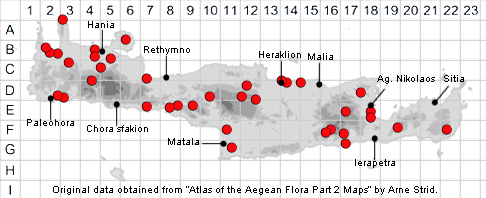SPECIES DESCRIPTION
TRIFOLIUM RESUPINATUM
Family and Genus:- See- LEGUMINOSAE/Subgen. LOTOIDES/Sect.
Common Names:- Reversed clover
Homotypic Synonyms:- Amoria resupinata, Galearia resupinata,
Xerosphaera resupinata.
Meaning:- Trifolium (L) With three leaflets.
Resupinatum (L) Inverted, reversed.
General description:- Very variable, low to short, prostrate or sprawling, generally
hairless annual.
Stems:-
1) 10-30(-60) cm, procumbent, ascending or erect.
Leaves:-
1) Leaflets, 7-20 mm, obovate-cuneate,
2) Stipules, ± membranous, ovate, acuminate.
Flowers:-
1) Flower heads, 10-12 mm in diam. at anthesis, broadly campanulate to
subglobose
2) Flowers, resupinate, scented or scentless.
3) Peduncles, filiform, somewhat exceeding the subtending leaf.
4) Bracts, minute, united at the base.
5) Calyx, 2-lipped, 5-10 mm in fruit, pyriform, sparsely pubescent to tomentose
strongly inflated, reticulate-veined, crowned by the 2 setaceous upper teeth:
a) tube, pubescent on the adaxial side.
b) teeth, the 3 lower, shorter than the tube, lanceolate, upper 2 equalling tube,
narrower.
6) Corolla, 6-10 mm, mauve or purplish pink.
7) Fruiting heads, ± pedunculate. globose, 15-20 mm in diam.
Fruit:-
1) Legume, included in the calyx or exserted. (1-)2-4(-10). seeded
Key features:-
1) Fruiting calyx, pyriform, pubescent, tomentose or lanate (sometimes finally
glabrescent), adaxially gibbous.
2) Bracts, inconspicuous and ± concealed.
4) Fruiting heads, ± pedunculate.
5) Calyx, upper teeth evident, divergent.
6) Flowers, reversed.
Habitat:- Salines, freshwater swamps, and seasonally wet grassland. 0-900 m. (-
1400 in dolines).
Distribution:- Throughout Greece, common in the west. - probably native in the
Mediterranean area and SW Asia. Fairly widespread but not too common on Crete.
Flowering time:- Late Mar to early July.
Photos by:- Steve Lenton
